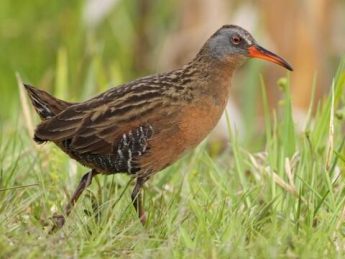Introduction
Quick Navigation
Some decades ago, gazing out of your windows and watching birds fly was considered an act of relaxation or some hobby of a sort. People who lived less busy lives and around the countrysides were usually the ones most interested. Birdwatching was done for purely aesthetic reasons as the sights of these flying creatures came with a certain nostalgia. Years later, man’s curiosity led him to begin observation and studying of animals, birds included, and this birthed the concept of birding. This activity is now being massively encouraged as people are actively becoming involved in it. Binoculars, bird guides, and bird magazines are an essential part of the birding kit.
Birds are animals quite distinguished from the other classes of animals like reptiles, amphibians, and mammals. Their distinct physical features like their beaks, wings, talons, and tails set them apart in the animal world. Most birds can fly while others are flightless, but they all possess wings as flight is an original design of these creatures. Several species of birds exist in our world today, and they were even more in the early days before the advent of the industrial age and technological advancements as their habitats have significantly reduced.
See also; birds of minnesota
Many birds are native to specific regions and places. This means that these birds are indigenous to these places and are found therein in abundant numbers. Native birds can be introduced to other areas to increase their global numbers, but not all of such trials are usually successful. Areas with several native bird species are often held in high regard in the birding world as it affords birders opportunities to spot more of these wonderful creatures. The state of Virginia is one of such birding hotspots where numerous bird species frequent on a regular basis and can be seen from time to time.
Check also; birds of missouri
Ecological description of Virginia
Most American states have nicknames, and Virginia is not left out as it is often referred to as the Mother of Presidents. With a population of over eight million people, it is the twelfth most populous state in America, with Richmond as its capital city. This state played a very strategic role during the American Civil War, which has not been forgotten. This state’s economy is diversified with several sources of income which include local and state government, agriculture, military, and technological resources. Virginia also has a high population of military personnel and establishments as it spends a large amount of its budget on defense.
Ecologically, Virginia is a paradise for animals and birds as sixty-two percent of the state’s area is covered in forests which consists of hardwood and pine trees. These extensive natural grasslands significantly contribute to the abundance of wildlife present in the state. A particular species of deer boasts of a population of about a million in this region. Mammals and creatures thrive wonderfully in the forest-filled state. The aviary world is not left out, as many bird species can be easily spotted there. The aquatic life of water organisms and fishes is also largely supported due to its humid climate and interwoven and intricate river system.
See this birds of ohio
Birds native to Virginia
Native birds are particularly interesting to watch as you would get the chance to carefully study and observe them since they usually appear very often. Generally, the physical topography of Virginia conveniently allows these animals, both the terrestrial and aquatic animals, to breed, exist and survive. There are about four hundred and seventy-six species of birds that call this region home. Some of these bird species include glossy ibis, Northern shoveler, Virginia rail, American oystercatcher, Northern sawwhet owl, Veery, Cerulean warbler, American flamingo, groove billed ani, and chimney swift.
Glossy ibis
This large bird is quite similar to egrets and heron, which it associates with but can be distinguished with its decurved bill and dark-colored feathers. During feeding, it can be found in groups, and in summer, it is usually sighted in coastal marshes and wetlands. Its diet consists mainly of fish, and small invertebrates readily found in shallow waters. When these birds take to flight, they usually form the V-shaped flying formation, quite common with migrating geese.
Check also black and white bird
Northern shoveler
This common duck usually feeds on plant materials by dabbling on them with its bill to extract them from the water. Aquatic invertebrates are also favorites of this bird, and it often fancies marshes with mud at their bottom as those invertebrates are pretty abundant there.
It is also a highly territorial bird that is often very quiet and surprisingly a nimble flier. Although they are migratory birds, their sight in Virginia is not rare as they still frequent the area, especially during summer.
Virginia rail
They are small water birds that are fairly common in the state of Virginia as they are shy. They are more heard than seen, which greatly excites birders as the ability to identify birds with their sounds is an immensely useful one. When pursued by predators, they run instead of flying and are mostly found in brackish and freshwater. Flight for this bird is reserved solely for short distances or migrations.
American oystercatcher
It is set apart by its physical appearance, which is a combination of black and white-colored wings and feathers and a long orange beak that is bright. They are also coastal habitat dwellers that feed on shellfish and other water invertebrates.
Northern sawwhet owl
They are a small owl species that are found in dense thickets, and these migratory birds have no pattern to which they strictly follow. Like most owls, they have excellent hearing and commonly feed on small mammals, which they swoop on and carry away. These predators are gradually becoming threatened species as they are often preyed on by more giant owls and raptors like hawks and eagles.
See also can birds eat almonds
Conclusion
Bird magazines are commonly filled with pictures of different bird species, some of which are found in large numbers in the land areas that make up the state of Virginia.

